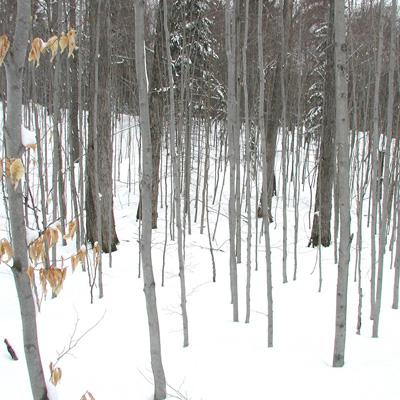The Influence of American Beech Thickets on Biodiversity in the Northern Hardwood Forest

Beech bark disease of the American beech tree has dramatically altered hardwood forest structure and composition across northeastern North America. Extensive tree mortality has resulted in prolific root suckering, or sprouting. In some forest stands, root suckering has led to abundant understory thickets of small-stemmed beech clones. To determine how these beech thickets impact local forest biodiversity, NSRC researchers compared the diversity of groundcover plants, small mammals, amphibians, and craneflies between plots with and without beech thickets on the Huntington Wildlife Forest in the center of the Adirondack Park in New York State.
Plots with beech thickets and without thickets differed in beech sapling abundance, leaf ground litter depth, and coarse woody debris (logs) volume. Researchers observed 22 cranefly, 11 amphibian, and 7 small mammal species on the plots. There were no differences between thicket plots and non-thicket plots in the diversity of cranefly, amphibian, and small mammal communities.
Researchers observed 43 different groundcover plant species. Groundcover plant richness and diversity were lower in thicket plots compared to non-thicket plots, and the number of beech saplings in a plot had a strong influence on groundcover plant diversity. Forest managers may want to consider site preparation techniques, such as mechanical removal of understory beech, to minimize the impacts of thickets.
Download printable version [PDF]
Download full final report [PDF]
